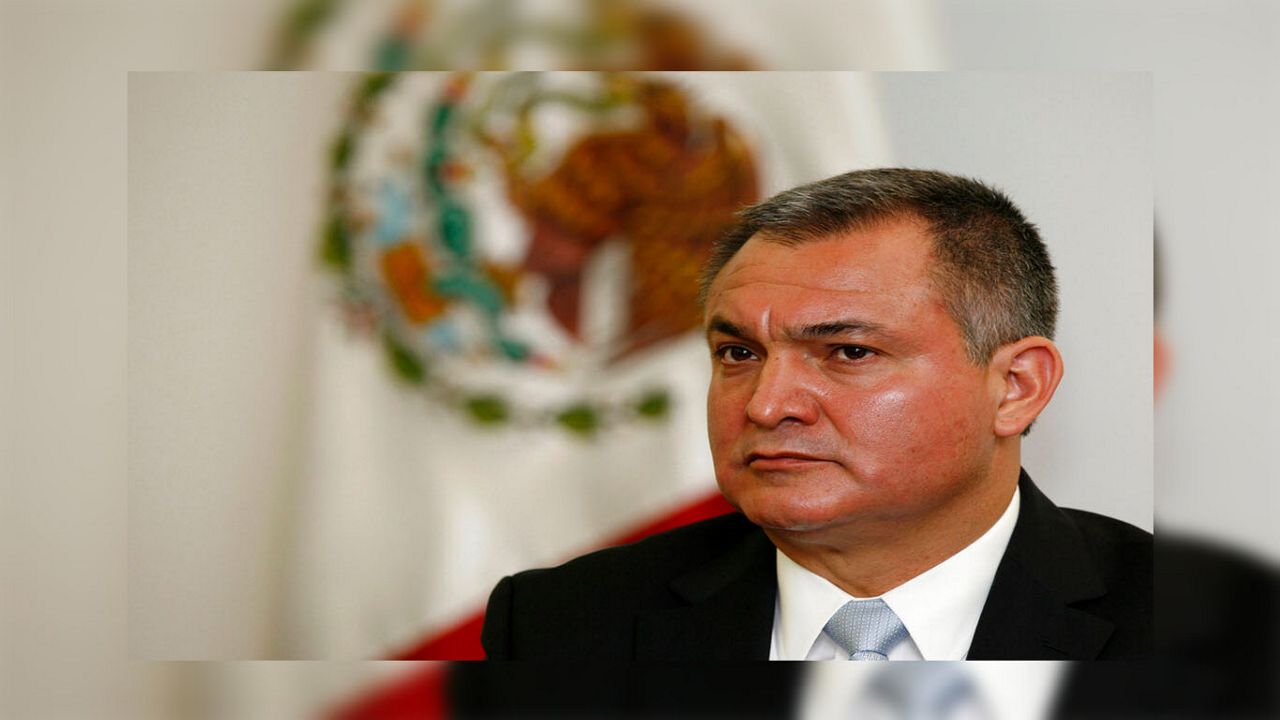The long-awaited trial for drug trafficking against the former Secretary of Public Security of Mexico Genaro García Luna will begin this Tuesday in New York, just over three years after he was arrested by the US authorities for allegedly cooperating with the powerful Sinaloa Cartel.
The process will start with the selection of the jury, with interviews with dozens of possible candidates to integrate it after an initial screening carried out in recent days.
Once the jury is formed, the initial arguments of the Prosecutor’s Office and the defense of García Luna will begin, who if found guilty faces a minimum sentence of ten years in prison and a maximum of life imprisonment.
The person who was the head of Public Security during the government of Felipe Calderón (2006-2012) is accused of drug trafficking and accepting bribes from the Sinaloa Cartel in exchange for facilitating the group’s operations.
The former leader of the organization, Joaquín “el Chapo” Guzmán, was tried and sentenced in 2019 to life imprisonment in the same New York district court in Brooklyn that handles the García Luna case.
COOPERATION WITH THE SINALOA CARTEL
Although accusations had been floating for years about an alleged collaboration of the former Mexican minister with the drug trafficking group, in the trial against “el Chapo” García Luna was directly involved by one of the key witnesses, Jesús “el Rey” Zambada.
“El Rey”, a former Cartel official imprisoned in the United States, claimed to have paid millionaire bribes to García Luna, both when he was Secretary of Public Security and previously, when he directed the now-defunct Federal Investigation Agency.
The US Attorney’s Office assures that “the defendant used his official positions to help the Sinaloa Cartel” in exchange for “multimillion-dollar bribes” and has advanced that it has abundant evidence.
PLENTY OF EVIDENCE AND WITNESSES
The huge amount of documents and other evidence collected by the US authorities is what has partly lengthened the pre-trial process, to give lawyers time to review these materials and prepare their defense.
Among the arguments that García Luna is expected to use is, according to advances in court documents, the fact that during his tenure he was recognized by the US for the fight against drug trafficking and held numerous meetings with officials from that country.
It remains to be seen, meanwhile, if the former minister involves other senior officials during the trial or if some of the witnesses who testify throughout the process can also do so.
The Prosecutor’s Office has said that it plans to call “numerous witnesses” to testify, although their identities have not been disclosed.
Last November, the judge in charge of the case, Brian Cogan, authorized the Prosecutor’s Office to inform the defense of the names of the witnesses at the last moment, only three days in advance in the case of those considered insensitive and a day in the case of the sensitive.
According to the Prosecutor’s Office, identifying relevant witnesses could put their safety at risk. Anonymity and protection will also be guaranteed to the members of the jury, according to Cogan decreed last year, who highlighted “the dangerousness of the defendant demonstrated by the seriousness of the crimes with which he is charged.”
Unlike many other defendants in proceedings of this type, García Luna will attend the trial dressed as a civilian, in a suit and tie, and not with the usual prisoner’s uniform, as recently authorized by the judge in response to a defense request. .
